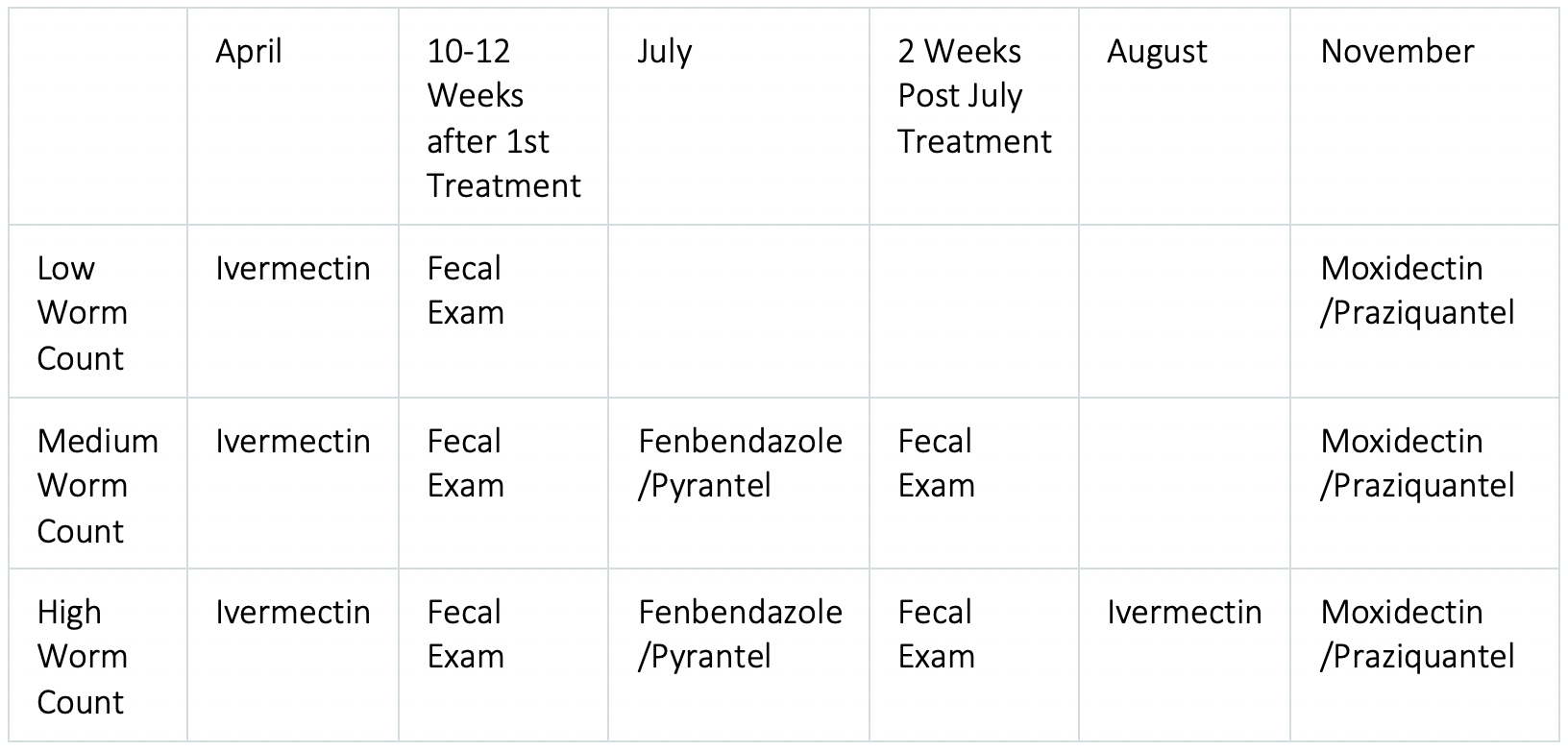What guidelines do you have for deworming my horse?
Equine intestinal worms have evolved considerably over the last 20 years, and so has our understanding of their life cycles. We now know that in any given herd, 20% of the individual horses carry 80% of the intestinal worms. These few animals are responsible for shedding most of the eggs that contaminate the environment and infect everybody with the next generation of parasites. Generally, this characteristic is a constant through the horse’s life, meaning that those with heavy burdens will always be more susceptible to reinfection despite regular deworming, while others are very resistant and have few intestinal worms at any given time.
So, if each horse has a consistently different level of intestinal parasitism, then treating everybody with the same deworming product rotation at the same two-month interval doesn’t make much sense. This approach results in most horses being exposed to unnecessarily frequent medical treatments, encourages the growth of drug resistant parasites, and is expensive. If we continue to use dewormers in this manner, soon none of them will be very effective and we will be unable to control intestinal parasites.
McKee-Pownall Equine Services has worked with a board-certified parasitologist to create an approach to deworming based on the latest research, in order to ensure that your horse receives exactly the right medication at exactly the right times, based on the identification of their carrier status. Fortunately, we can detect and classify these high, medium, and low burden horses through fecal examinations at appropriate times of the year. Further fecal examinations will determine if the particular medication used is still effective for reducing the intestinal worm population in that horse. The November treatment will also control tapeworms. Please review the chart below, which outlines the individual treatment strategy for each category:
In most cases, this will dramatically reduce the overall number of deworming treatments needed on a farm per year, as the majority of horses require as little as 2 – 3 treatments. Additionally, you can be sure that your horse is receiving treatment tailored to their individual needs. Most importantly, this protocol will allow us to assess the effectiveness and preserve the long-term effectiveness of our deworming drugs.
Reducing exposure of your horse to parasites is as important as treating with a deworming product. This can easily be done by removing manure from pastures & paddocks at least two times per week. If you prefer to spread manure on your pastures, be sure to compost it first. Properly composted manure can be safely spread in the fall will little risk to horses on the pasture. Here is a link to a helpful website to get you started on composting your manure pile:
http://whatcom.wsu.edu/ag/compost/horsecompost.htm
When new horses arrive on your farm, a fecal exam should be run, and the horse treated appropriately before it is allowed to interact with your horses.
Broodmares, foals and horses travelling to warmer climates in the wintertime require different treatments based on their individual circumstances.
• Broodmares should be dewormed the day after foaling to prevent transmission of milk worms to the foal
• Foals should be dewormed every 2 months with ivermectin or Panacur/Strongid due to the high risk of roundworm infestations. There are pockets of roundworm resistance to ivermectin so be sure to discuss the appropriate choice with your regional McKee-Pownall veterinarian
• Horses travelling to warmer climates in the wintertime will require an additional February treatment
Miniature horses require a slightly different deworming approach, as they should not receive moxidectin products. Miniature horses should be treated according to the following schedule.
If your miniature horse shares a pasture with a donkey, or if habronema is a risk in your area, a slightly modified schedule will be required. Please speak to your veterinarian regarding the specific treatments needed to address these issues.


